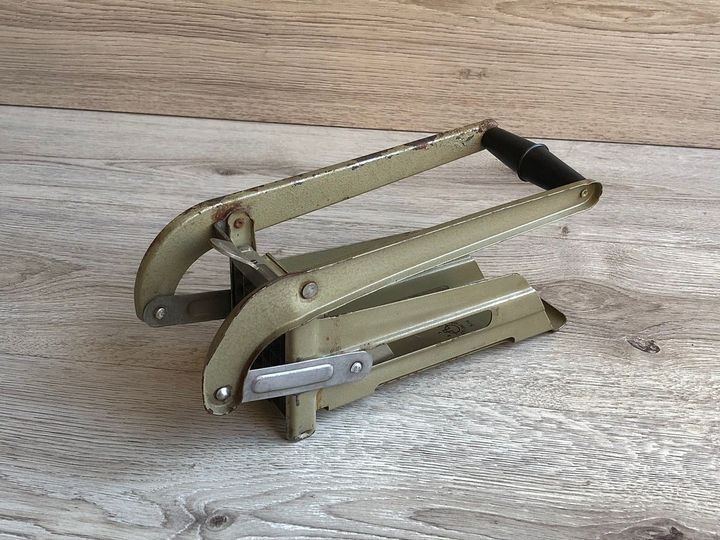A Glimpse into History
The classic kitchen slicer, a staple of mid-20th-century culinary tools, embodies the essence of vintage kitchen craftsmanship. Emerging in the early 1900s, this ingenious device was designed to simplify the process of preparing potatoes, a staple in many households. Its robust metal frame and interchangeable blades reflected an era of durable, functional design, tailored to meet the needs of busy kitchens.
Usage Through the Decades
The slicer was celebrated for its ability to cut potatoes with precision, producing consistent slices for various culinary applications. Whether preparing crispy fries, creamy gratins, or hearty stews, this tool was an invaluable asset. Its hand-operated lever allowed for effortless slicing, making it accessible to home cooks and professional chefs alikе. The versatile blade options made it adaptable, enabling users to achieve different cuts and textures with ease.
A Lasting Legacy
Despite the advent of modern kitchen appliances, the classic kitchen slicer remains a symbol of timeless design and reliability. Its enduring popularity is a testament to its effective and straightforward functionality. Today, this vintage tool is cherished not only for its practical use but also for its nostalgic charm. Collectors and enthusiasts appreciate it as a piece of culinary history, reflecting an era when kitchen tools were built to last and designed to perform with grace and efficiency.
The classic kitchen slicer continues to inspire admiration, embodying a legacy of culinary craftsmanship that transcends generations. Its presence in modern kitchens, whether as a functional tool or a collectible relic, underscores its lasting impact on the art of food preparation.
